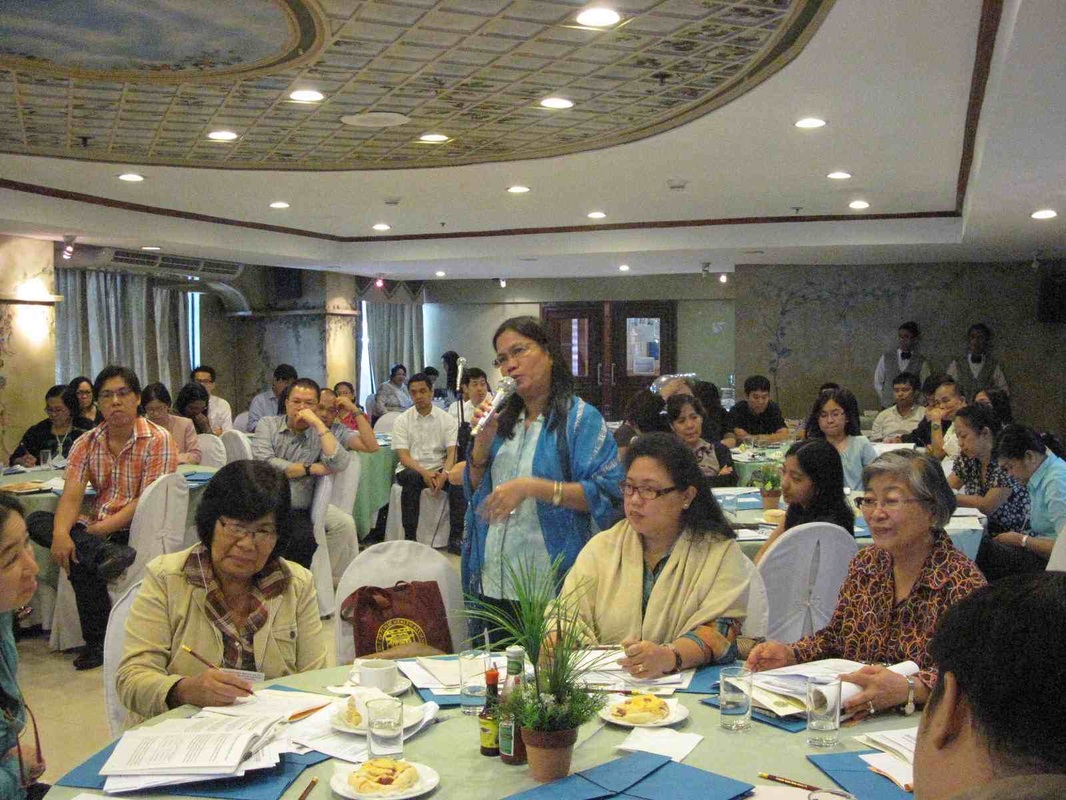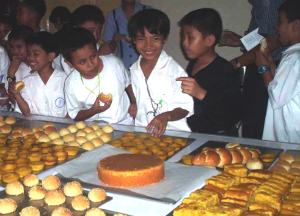Food Fortification
|
Food fortification is the practice of adding vitamins and/or minerals (micronutrients) to foods and condiments, to improve their nutrient content.
In countries, like the Philippines, where micronutrient deficiency has a serious impact on the population’s health and survival, food fortification plays a critical role in improving the health of vulnerable groups. NCP’s strategy for reducing micronutrient deficiency in the Philippines is three-fold: the promotion of a micronutrient rich diet, the use of micronutrient supplements, and food fortification. Dr. Florentino Solon, a founding member of NCP, conducted pioneering research into food fortification in the 1970s. His research showed how these three strategies can be utilized to reduce vitamin A deficiency in the Philippines. In collaboration with Johns Hopkins University, NCP found vitamin A fortified margarine and vitamin A fortified bread reduced vitamin A deficiency. The fortification of flour with both iron and vitamin A was able to reduce both Vitamin A deficiency and anemia. These studies provided strong evidence that led to the passage of the Philippine Food Fortification Law in 2000, and its subsequent implementation in 2004. Despite changes in government and industry cooperation, food fortification has been responsible for the reduction of vitamin A deficiency and anemia in the Philippines since 2004. However, anemia remains a problem for infants as well as pregnant and lactating women. NCP is currently conducting research on the monitoring and evaluation of food fortification. |
Food Fortification Research and Programs
|
How useful is the Quick View Vitamin A Test Kit manufactured and marketed by Bagco, Inc?
To determine this, we conducted a validation study to compare Quick View against HPLC in estimating the Vitamin A content of coconut oil purchased from groceries. We found that Quick View is best used to identify whether the sample has met a minimum threshold. This means that Quick View can be used to determine whether a sample has met at least 10 mg RE/kg or at least 15 mg RE/kg. Appropriately fortified oil is required to have a concentration of 12 - 23 mg RE/kg. Results will be submitted for publication. |
|
Method Validation and Program Monitoring of vitamin A-fortified vegetable oil using Bioanalyt iCheck Chroma 3
By law, all cooking oil sold in the Philippines must be fortified with vitamin A. Ensuring vegetable oil has the right amount of vitamin A is critical in reducing vitamin A deficiency. However, the widespread practice of selling "dip-out oil" in the market place - where quantities of oil stored in large containers are measured out and sold individually (also known as "takal" in Filipino) poses a challenge to regulation. We found that iCheck Chroma has a high specificity and positive predictive value to identify appropriately fortified oil (12 - 23 mg RE/kg). We also found that most unbranded oil in public markets are not fortified. Results will be submitted for publication. This research is a collaborative study between NCP and Bioanalyt, the makers of iCheck Fluoro-iEx, together with local government unit partners in Negros Occidental, and the Department of Nutrition, UP College of Public Health. |
|
Review of the Mandatory Food Fortification Program of the Philippines
The National Nutrition Council, funded by the UNICEF, commissioned the NCP to conduct a review of the Mandatory Food Fortification Program, in 2012. This review required a desk review of existing evidence and a series of consultations with various stakeholders. Key findings of the review were: 1. Program implementation structure was put into place with the Department of Health as the lead agency for fortification and program management. However, ownership and coordination within DOH and among other government agencies is a well-recognized problem. 2. A program management information system was planned but not established. 3. Promotion of consumption of fortified foods and recognition of compliant food manufacturers can be improved. 4. The oil and wheat flour industries, in general, comply with mandatory fortification. There is no fortified sugar in the country while only NFA rice was iron-fortified. 5. Smuggling of unfortified cooking oil and wheat flour threaten the program and puts into a disadvantage compliant food manufacturers. 6. There are evidences of the effectiveness and acceptability of other iron fortificants for flour, vitamin A for sugar and premixes for rice which must be explored. Based on these findings, NCP proposed the following recommendations: 1. Maintain mandatory food fortification of wheat flour and coconut and palm cooking oil with vitamin A and rice, both NFA and commercial, with iron. 2. Maintain the current levels of fortification. 3. Pursue studies on the addition of other micronutrient in food staples (i.e folic acid in wheat flour and multiple micronutrients in rice) and on the feasibility of sugar fortification at repackers level. 4. Designate NNC as the over-all coordinating body for food fortification. 5. Increase the capacity of regulatory agencies to do monitoring. 6. Design, promote and implement incentive packages for compliant food manufacturers. 7. Conduct periodic consultative meetings with the food industry. 8. Establish a Management Information System for the program. |
|
NutriPan sa Eskwelahan
The NutriPan sa Eskwelahan program establishes school bakeries in public schools, ensuring their students have a continuous supply of fresh Vitamin A fortified bread at meal times. In coordination with the local Department of Education and key stakeholders, NCP has established more than 50 NPE bakeries in public schools throughout the Philippines. NCP found the program is most sustainable in schools that are large and have a committed leadership. Support from the local government unit helps greatly, in organizing the bakery and ensuring it's sustainability. The bread is sold fresh and any profits can be managed and spent on school health and nutrition programs. GMA Network's daily morning program interviewed NCP nutrtionist, Beia Mendoza, in July 2013 discussing NutriPan's success at a participating school. |





